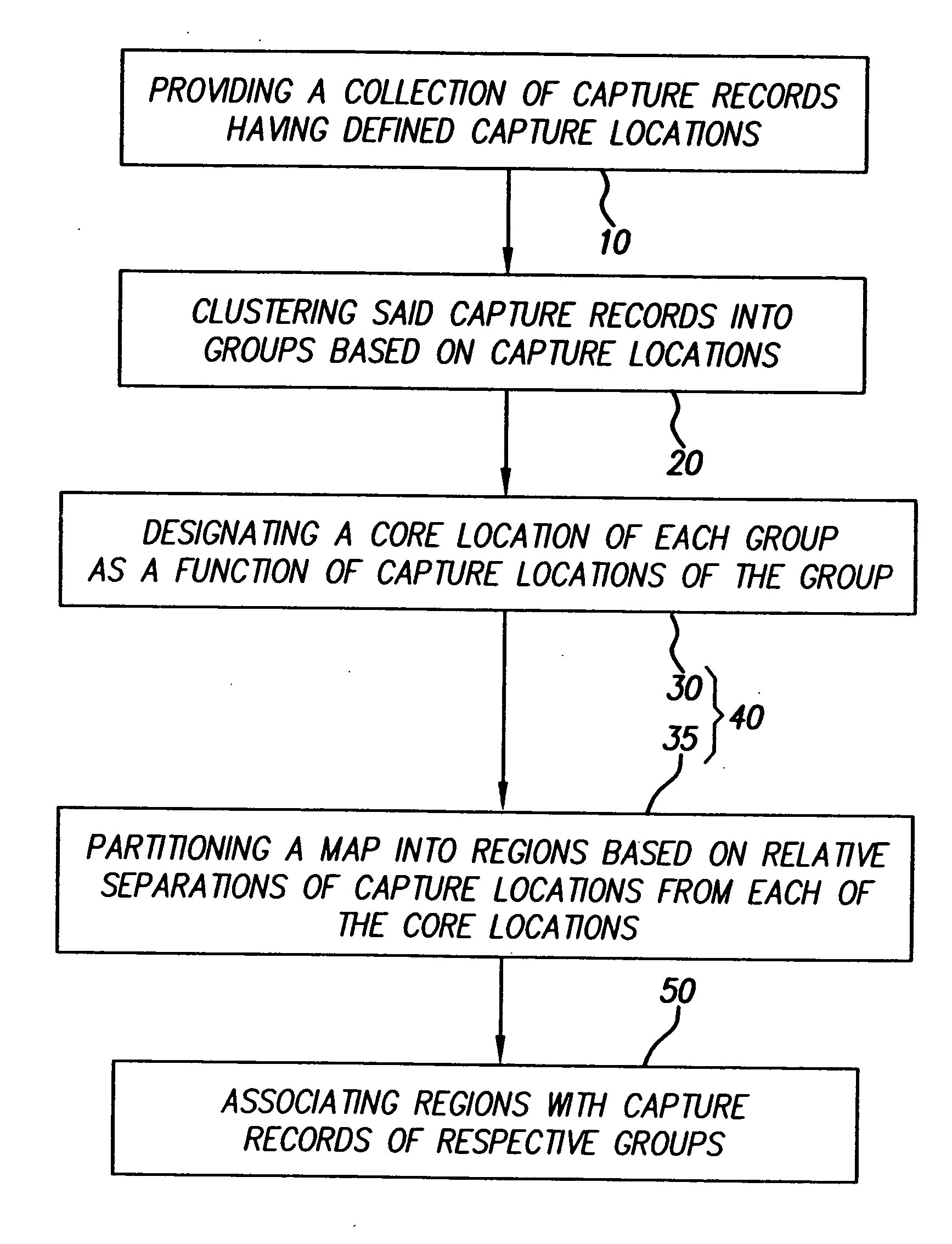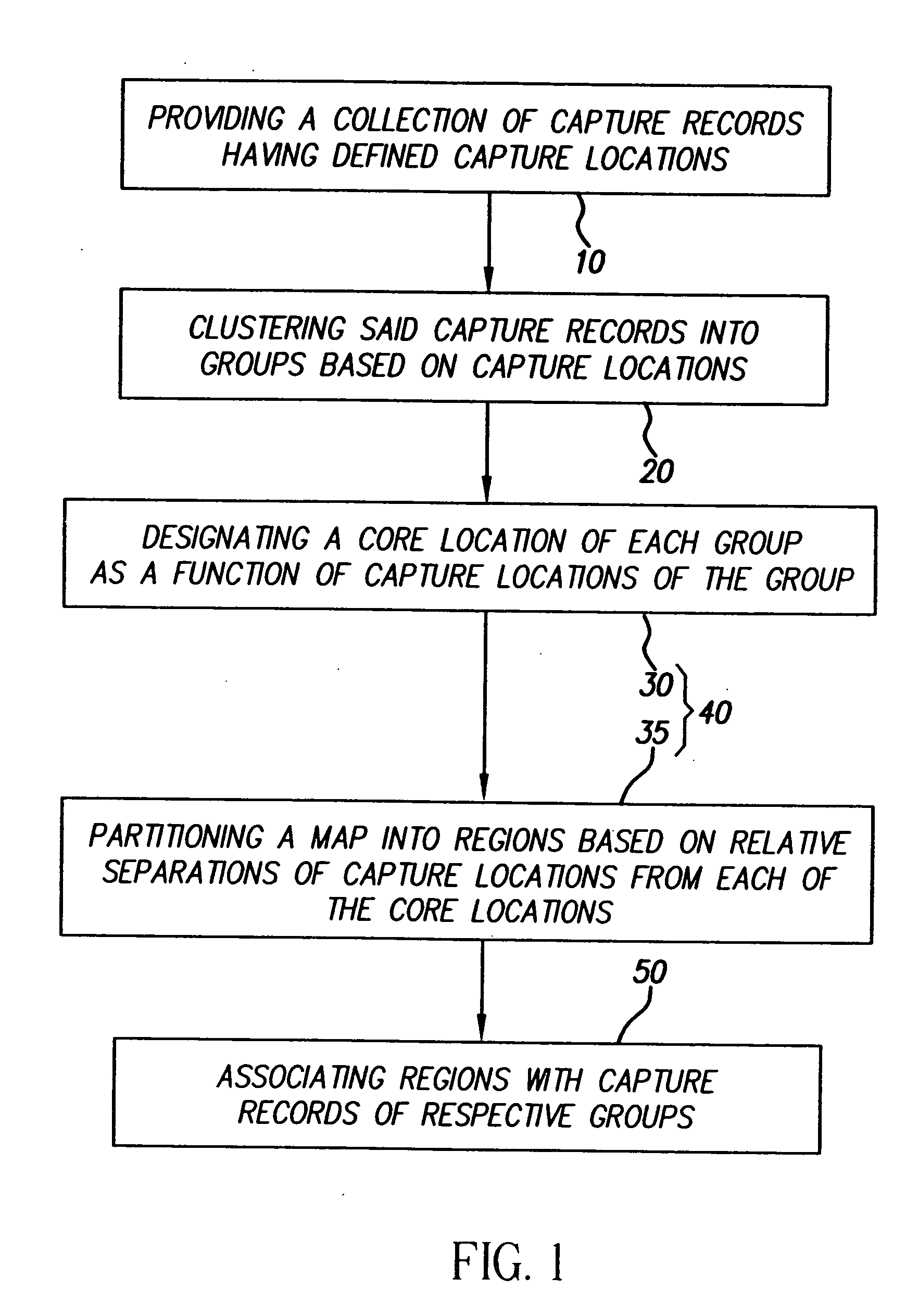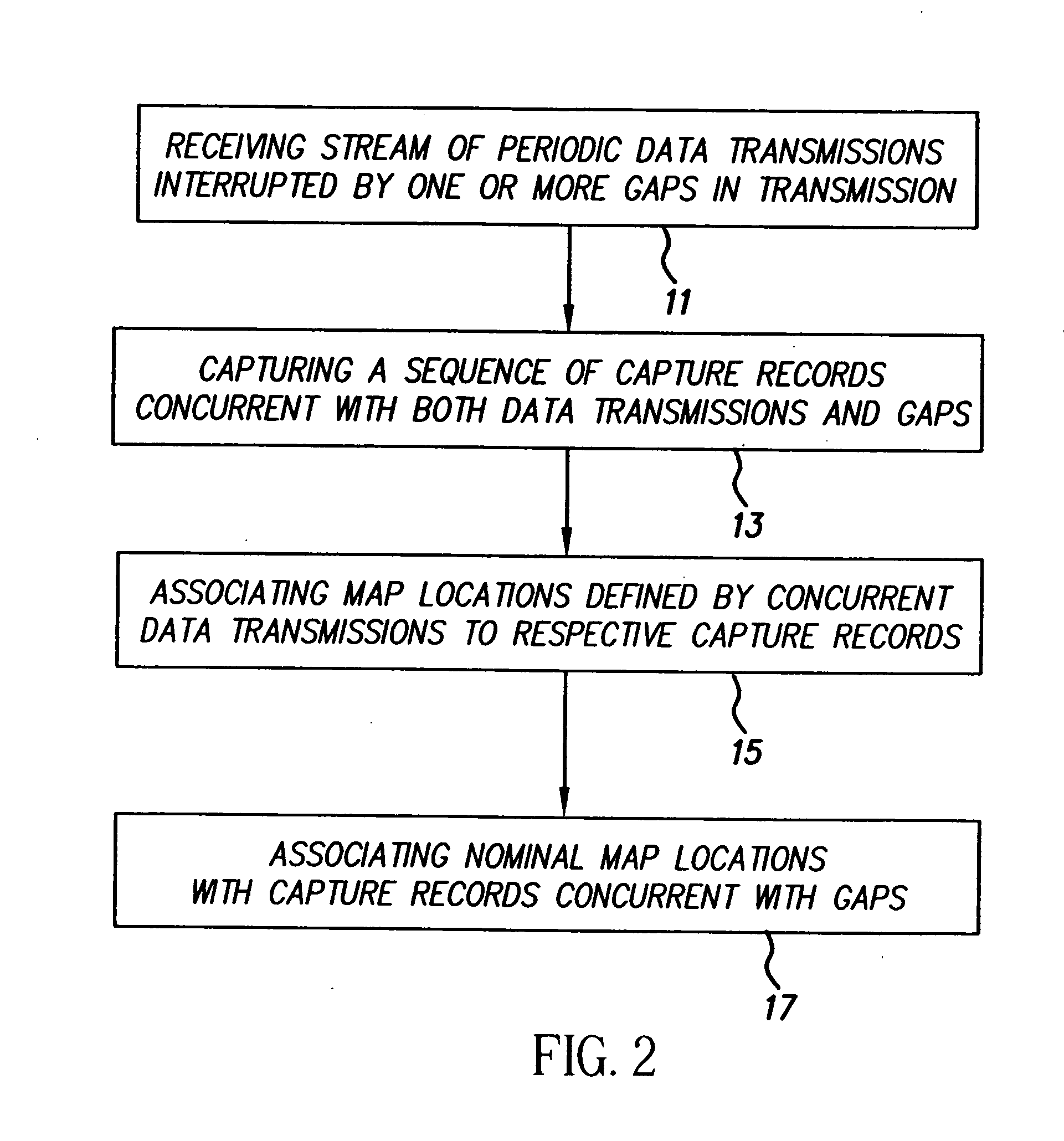Location based image classification with map segmentation
a technology of location and image, applied in the field of image classification, can solve the problems of slowness and burden, and is inherently difficult to use for that purpose, and achieve the effect of reducing the difficulty of image classification
- Summary
- Abstract
- Description
- Claims
- Application Information
AI Technical Summary
Benefits of technology
Problems solved by technology
Method used
Image
Examples
Embodiment Construction
[0033] In the method, images or other captured records are clustered using capture locations and, optionally, a chronology, such as date-times of capture. A core location is designated for each group and a map that includes the capture locations is segmented relative to the core locations into regions that are then associated with the captured records of the respective groups.
[0034] The term “capture record” is used here to refer to reproducible recordings of images and sounds in any combination, for example, capture records include still images, video sequences, and sound recordings and also include more complex types of recordings, such as multiple spectrum images and scannerless range images.
[0035] The term “date-time” is used here to refer to time related information, such as a date and a time of day; however, a date-time can be limited to a particular unit of time, such as date information without times.
[0036] The term “chronology” is used here to refer to a relative order i...
PUM
 Login to View More
Login to View More Abstract
Description
Claims
Application Information
 Login to View More
Login to View More - R&D
- Intellectual Property
- Life Sciences
- Materials
- Tech Scout
- Unparalleled Data Quality
- Higher Quality Content
- 60% Fewer Hallucinations
Browse by: Latest US Patents, China's latest patents, Technical Efficacy Thesaurus, Application Domain, Technology Topic, Popular Technical Reports.
© 2025 PatSnap. All rights reserved.Legal|Privacy policy|Modern Slavery Act Transparency Statement|Sitemap|About US| Contact US: help@patsnap.com



